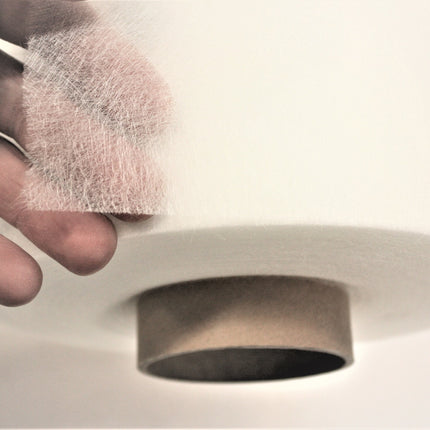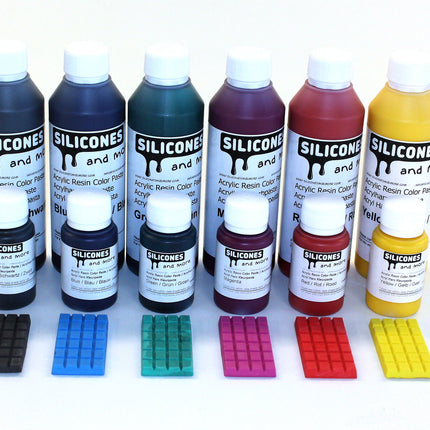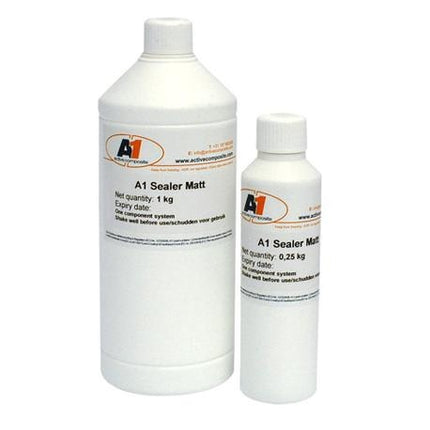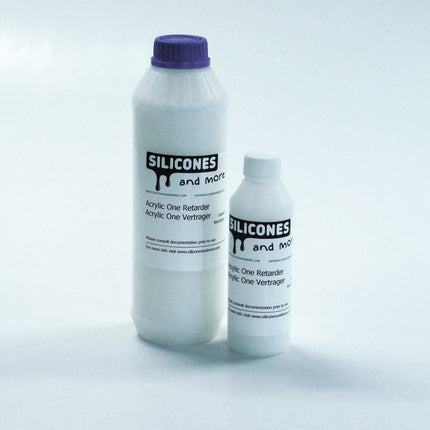A1 Acrylic Resin / Gypsum
-

Acrylic resins
A1 Acrylic Resin A1 Acrylic Resin is one of the safest and easiest to work with resins for professional castings,
-

Porcelain plaster & model plaster for molds and casting
Porcelain plaster & Model plaster for molds and casting Discover professional plasters for molds, models, and artistic applications. From fine
-

Fiberglass & acrylic resin reinforcement materials (a1)
Fiberglass & reinforcing materials for Acrylic Resin (A1) Reinforce your acrylic resin applications with professional-grade fiberglass and reinforcement products .
-

Acrylic resin dyes & pigments
Acrylic resin dyes & pigments Bring color to life in your A1 acrylic resin or epoxy projects with our professional
-

Acrylic resin Sealer
Please visit Acrylic One Academy for all info on acrylic one materials! 1.0 A1 Sealer PLUS is a water-borne
-

Acrylic Resin Additives, Fillers & Additives
Optimize your acrylic resin projects with our professional additives collection. From controlling curing time to adjusting viscosity, our additives give
What is A1 acrylic resin?
A1 acrylic resin (also spelled acrylic resin) is a safe, low-odor acrylic resin material for acrylic resin casting and lamination. The system consists of an A-component (liquid) and a B-component (powder) that cure at room temperature.
You can pour into silicone molds or apply it to walls and objects for decoration and props. Thanks to the very low heat generation (low exotherm), both fine details and large castings are possible—ideal for decorative walls, ornaments, artwork, sculptures, and strong hollow parts.
Composition & ratio: Mix A (liquid) : B (powder) = 1 : 2 (weight) until smooth and lump-free.
Comparison with plaster: after pouring, acrylic resin and porcelain plaster look similar (plaster is slightly whiter), but acrylic resin is stronger, easier to work with, and—after sealing—suitable for outdoor/damp areas.
Reference Standard: This is our reference standard for safe, strong, and easy-to-color/seal acrylic resin.
Why acrylic resin for resin casting?
- → Low exotherm → cast larger sections without overheating/distortion
- → High detail capture → perfectly captures wood, stone and other textures
- → Simple & safe → Process at room temperature; suitable for studios, schools and workshops
- → Strong & light → with fiberglass ideal for hollow sculptures and support caps
- → Finishing & protection → matte or satin acrylic resin sealer for outdoor/moisture
Typical applications
- ✓ Casting in silicone molds for reliefs, models, ornaments and reproductions
- ✓ Iron on walls/objects for scenic set construction and props
- ✓ Laminating with fiberglass (C-veil + cloth) for rigid support molds and lightweight parts
- ✓ Large format panels/images thanks to the low exothermia during curing
Mixing ratio & processing
Basic mixing
Weighing & mixing: A : B = 1 : 2 (weight); stir homogeneously and without lumps.
Environment: stable room temperature; build up large surfaces in thin layers.
- Use clean silicone molds for tight release
- Flexible molds work best
- Let each layer set before the next
Laminating & reinforcement
Laminates: Thoroughly saturate fiberglass cloth or triaxial fabric; avoid dry spots.
Reinforcement: Combine with fiberglass cloth or chopped fibers for very strong support caps and laminates.
- After light roughening, acrylic resin adheres well to itself
- Always seal finished pieces for outdoor use
Additives & accessories
-
Acrylic resin thixo ,
This makes the liquid acrylic resin thicker like mayonnaise so you can spread it easily. -
Acrylic color paste ,
This will produce beautiful colours in the acrylic resin during mixing, ensuring the product is coloured throughout. -
Acrylic resin sealer matte ,
If the product comes into contact with water or is left outdoors, it's necessary to apply a sealer. This sealer provides a matte finish, and applying multiple coats gradually increases the gloss. -
Acrylic resin sealer satin ,
If the product comes into contact with water or will be left outdoors, it's necessary to apply a sealer. This sealer gives a semi-gloss finish. The gloss effect intensifies with multiple coats.
-
Glass fiber cloth 200 g/m² ,
A strong yet lightweight woven fiberglass cloth. You can pour it into acrylic resin or drape it over an object and then spread acrylic resin over it. The result is a very strong acrylic layer. -
Triaxial fiberglass cloth ,
A looser woven fiberglass cloth, which makes it easier to drape, but slightly less strong than regular fiberglass cloth -
C-veil glass fiber 30 g/m² ,
This isn't actually a fabric, but a very thin mat of long, bonded glass fibers. The result is a very fine cloth that drapes perfectly and thus perfectly takes the shape of a model. This reinforcement can therefore be incorporated into the contact layer. -
Accelerator ,
This allows you to shorten the acrylic resin working time and de-mold time -
Delay ,
This allows you to extend the acrylic resin working time if you are making larger projects or want to mix a lot of materials. -
Gilding wax and primer ,
This allows you to give your naturally off-white acrylic resin a beautiful color effect. For example, bronze, gold, silver, or one of the other beautiful colors. -
Chopped fibers ,
You can mix this into the acrylic resin (in the backing layers) to achieve a stronger final result. Combining a layer of acrylic resin with fiberglass between two layers of acrylic resin and fiberglass cloth creates a very strong sandwich panel.
Frequently Asked Questions (FAQ)
Can I use silicone molds for resin casting with acrylic resin?
Yes. Silicone molds release cleanly and retain fine details—perfect for acrylic resin casting.
Is A1 acrylic resin the same as Jesmonite?
These are comparable acrylic resin materials. We offer Acrylic One (A1) as a strong, low-heat, and easy-to-color/seal alternative.
How does acrylic resin compare to plaster or epoxy casting resin?
Compared to plaster, acrylic resin is stronger and easier to work with. Compared to epoxy, it has a lower odor and generates much less heat—ideal for decorative and laminate applications.
Is there such a thing as 'transparent acrylic resin'?
A1 acrylic resin is naturally opaque (off-white). For truly transparent casting, choose epoxy resin. You can color or finish acrylic resin with acrylic resin paints/coatings.
Buy acrylic resin – Get started right away
Order A1 acrylic resin for casting & laminating, including additives, sealer, fiberglass, and accessories. Questions about resin and acrylic combinations or project selection? Our team is happy to help with friendly expert advice and fast EU delivery.






